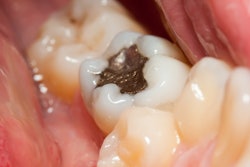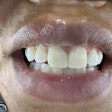
Between 2017 and 2023, dental amalgam restoration placements in U.S. patients U.S. plummeted by about 80%, according to a study published on September 6 in the Journal of the American Dental Association.
However, the reduction was the smallest among the most socially vulnerable of those identified at higher risk of developing serious health effects from mercury exposure by the U.S. Food and Drug Administration (FDA), the authors wrote.
"Within the populations studied in this data set, the proportion of dental amalgam and resin or composite restorations using dental amalgam declined," wrote the authors, led by Rashmi Lamsal, PhD, of the Virginia Commonwealth University School of Dentistry.
In September 2020, the FDA advised that high-risk individuals, such as pregnant women, should avoid getting dental amalgam fillings "whenever possible and appropriate." For the first time, the agency also listed patients with multiple sclerosis, Alzheimer's disease, and Parkinson's disease as high-risk individuals for amalgam fillings.
Previously, the FDA stopped short in telling patients to avoid mercury-containing fillings. Instead, the agency told high-risk individuals that they may face greater adverse health effects but that they should talk to their dentists about other options, such as non-mercury-containing fillings, like glass ionomer cement fillings.
To track the changes in dental amalgam restorations, a retrospective observational study of electronic health records data was conducted to calculate the rates of dental amalgam restorations from 2017 to 2023. The analysis included FDA-identified at-risk populations, according to the study.
Overall, the rate of dental amalgam restoration placements in the general population declined from approximately 22% in 2017 to about 4% in 2023, which was a decrease of about 81%, the authors wrote.
Also, an overall decline was observed in the FDA-identified high-risk patients, but the decrease was not as significant, they wrote.
Moreover, the study had limitations, including its reliance on simple descriptive analysis. It precluded pulling causal inferences for the changes in the percentage of dental amalgam utilization over time, the authors wrote.
In the future, more studies are needed to investigate factors linked to informed clinical decision-making about oral health and dental material choices, they wrote.
"Even within the groups identified as most vulnerable to harm, more targeted interventions and strategies are required to improve treatment among the most socially vulnerable," Lamsal et al wrote.




















